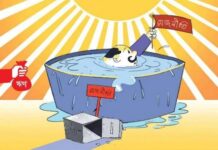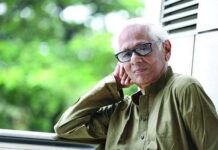Milton Friedman famously said inflation is always and everywhere a monetary phenomenon. More recently Paul Krugman stood the legendary University of Chicago economist on his head saying high inflation is nowhere “merely” a monetary phenomenon and it is “always associated with severe political and social disruption”.
It’s difficult to say whether India’s continuing scourge of high inflation has to do anything with any such disruption, despite what many say is a weak ruling government beset by allegations of corruption and policy slowdown, rising religious violence in parts of the country, and a breakdown of bipartisanship leading to parliamentary deadlock from time to time.
For nearly four years now, inflation has hounded India relentlessly, pushing up prices, corroding savings, hurting the poor most and making life difficult for its large middle class.
Between December 2009 and August 2013, wholesale price inflation – which measures inflation at the “factory gate” – averaged over 8%. Consumer inflation – which reflects shop and market prices – has hovered between 7.65% and 10.91% since January 2012.
Though fuel and mineral prices have also risen, India’s seemingly interminable bout of inflation is mainly driven by galloping food prices, say economists.
Economist Sthanu R Nair, who has written an illuminating paper on India’s “persistently high” inflation, says food inflation has been at “unacceptably high levels” for the last six years or so. This is when, he says, prices of food globally have been low.
More specifically, between December 2009 and August 2013, the increase in prices of eggs, meat and fish, fruits, vegetables and milk moved well beyond double digits – meat and fish prices actually recorded a whopping 17% increase.
“Such a trend has serious adverse welfare effects, given the high levels of malnutrition, poverty and household spending on food in India,” says Dr Nair.
Much of this hike in food prices is being attributed to rise in rural incomes – wages have grown by 20% annually over the last five years – which is prompting villagers to expand and move towards protein-rich diets.
There is evidence to show that people are spending more on milk, pulses, egg, fish and meat both in the cities and villages.
There are other reasons behind India’s “sticky” inflation.
A lot of food rots in India because of insufficient and low quality storage facilities, leading to shortages in off-peak season.
A recent report by the UK-based Institution of Mechanical Engineers said 40% of fruits and vegetables in India was lost every year between the farm and the consumer due to lack of adequate cold storage.
Also, food has become increasingly more expensive to grow, thanks to rising prices of fodder, electricity, diesel and fertilisers. Low productivity and small land holdings don’t help matters. “Given these trends,” says Dr Nair, “one can hardly ignore the contribution of the cost factor in firming up food prices in recent years.”
High inflation is bad news for Asia’s third largest economy.
It has hurt growth: India limped at 4.4% in the last quarter, its lowest rate in three years. A harried central bank raised interest rates for the second consecutive month this week to fight inflation.
Though the government says it is hopeful that growth, helped by higher farm output and exports spurred by a depreciated rupee, will pick up by the end of the year, many economists don’t share the optimism.
They believe that India will remain stuck in an unenviable position of high inflation and low growth for some time to come.
Others like World Bank chief economist Kaushik Basu believe India can tolerate high inflation if it has equitably distributed high growth – he favours a “10% inflation and 11% growth” scenario. He cites the case of South Korea, which endured annual inflation rates of 20% when its economy took off during the 1970s.
India’s need for rapid growth, say Amartya Sen and Jean Dreze in their new book An Uncertain Glory, is “far from over”. Despite two decades of rapid growth, India, they write, is “still one of the poorest countries in the world” with real incomes per head still lower than that of most countries outside sub-Saharan Africa. But, clearly, inflations needs to be reined in before India embarks on faster growth.
Source: BBC










